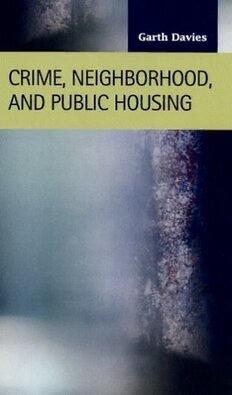
Crime, Neighborhood, and Public Housing (Criminal Justice : Recent Scholarship) (Criminal Justice Recent Scholarship) PDF
201 Pages·2006·1.065 MB·English
Most books are stored in the elastic cloud where traffic is expensive. For this reason, we have a limit on daily download.
Preview Crime, Neighborhood, and Public Housing (Criminal Justice : Recent Scholarship) (Criminal Justice Recent Scholarship)
Description:
Public housing projects, both in their structural design and sociodemographic make-up, constitute “neighborhoods.” Informal social control theory suggests that certain social factors differentially affect a neighborhood’s ability to regulate aspects of residential life, including crime. Public housing neighborhoods do not, however, exist in a vacuum; they are integral parts of their surrounding environments. Neighborhoods adjacent to public housing areas are likely to be affected by its proximity. At the same time, public housing is also reciprocally influenced by its immediate neighbors. Spatial autocorrelation analysis provides evidence of spatial patterning of crime in public housing and public housing neighborhoods. Generalized estimating equations reveal the presence of both outward and inward diffusion that is sometimes, but not always, mediated by sociostructural factors. The findings suggest that policies premised on deconcentration and decentralization would reduce crime in, and otherwise benefit, both public housing neighborhoods and surrounding communities.
See more
The list of books you might like
Most books are stored in the elastic cloud where traffic is expensive. For this reason, we have a limit on daily download.
